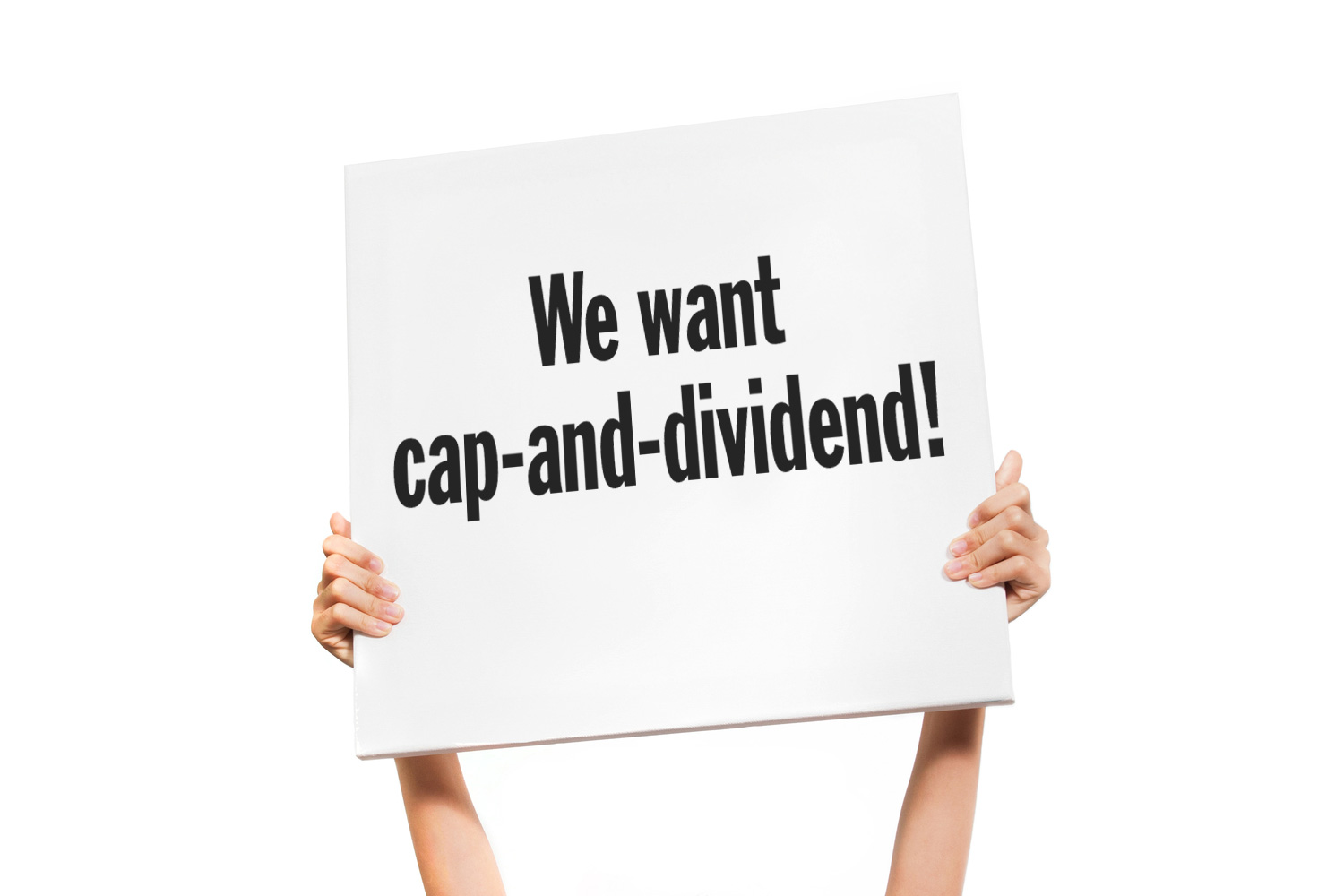In the past three weeks there’s been much debate in U.S. environmental circles over a provocative new paper [PDF] from Harvard University political scientist Theda Skocpol. In it, Skocpol gives the most compelling analysis yet of why the 2009 cap-and-trade bill to fight global warming went down in flames. In sum, Skocpol argues that intense and radical opposition from Tea Party Republicans proved much stronger than the environmentalists’ insider-game, partner-with-business, harness-polls-instead-of-the-grassroots approach.
My added value in commenting here is that I experienced the run-up to — and aftermath of — the failed Waxman-Markey bill from the field. I’ve been a grassroots climate organizer for 10 years, having founded the organization I still direct: the Chesapeake Climate Action Network. CCAN straddles much of the political landscape of America, organizing in the conservative “South” (Virginia) and the liberal “Northeast” (Maryland), while staying very involved in national climate initiatives in Washington, D.C., the geographic center of our region.
I saw from the church-basement view the rise of Tea Party opposition to Waxman-Markey and the insufficient grassroots organizing response from the major green groups. What efforts were made (Sierra Club stands out as well as the short-lived but respectable field effort of the group 1Sky) fell mostly on deaf ears since average people couldn’t comprehend the complexity of the cap-and-trade bill and could see no immediate and direct benefit in their lives.
Climate Progress blogger Joe Romm has joined many environmental heads in assigning cap-and-trade’s failure in large part to Obama’s lack of leadership for the bill. Plus the economy had tanked. These two factors are important, I agree, but they don’t get to the real heart of the problem.
Skocpol, on the other hand, from my field-based perspective, nails both the key problems and the solutions we need for moving forward. She is absolutely correct to call for a completely different legislative approach for the next big push on climate in Washington. She is correct in arguing that round two should be based on the policy of “cap-and-dividend” instead of cap-and-trade. David Roberts at Grist and others have applauded Skocpol’s criticism of the cap-and-trade campaign. But they are skeptical of her view that the best alternative is a policy that caps carbon emissions through permit auctions and then rebates the money directly to all U.S. citizens with a monthly check — cap-and-dividend.
My organization took the cap-and-dividend concept for a test drive through the grassroots landscape of the liberal-conservative Chesapeake region. What did we discover? The dividend policy has widespread and intense support in the church basements and Rotary Clubs. Why? Because it’s nearly the opposite of cap-and-trade. It’s simple, easy to understand, clearly beneficial to most citizens, and obviously capable of de-carbonizing our economy with necessary speed and transparency.
The intensity gap
How do we deepen and expand our climate movement in preparation for round two? Skocpol points out that the cap-and-trade bill not only provoked opposition from Republicans but intense opposition from the vocal minority Tea Partiers. That kind of intensity from a few, as we’ve seen, can have an enormous, withering affect. The national enviros had no parallel response. They had lobbyists and pollsters and dedicated core staff, but no real ground game.
Yes, efforts were made. There were online petitions from the national groups and quick sign-on letters from health leaders, green business heads, etc. But it was mostly inch-deep and cookie-cutter. Deep, effective organizing takes years. It’s based on personal relationships that emerge through concrete action and trust over time. There’s no such thing as fly-by-night or parachute organizing.
So as the intense grassroots Tea Party backlash began, the major enviros had no meaningful grassroots response, much less an intense response. Foundation money to major national environmental groups was absorbed mostly by core staff. There was no major green-group push for authentic, hard-won grassroots support in my states of Virginia and Maryland where several Senate and House swing votes existed. Indeed, many state-based grassroots groups like mine were explicitly excluded from support under several national funding initiatives whose goal on paper was to build support in the hinterlands.
Meanwhile, by early 2009, many regional and national leaders of the U.S. climate movement, mostly with outside-the-Beltway roots, could see the Waxman-Markey cap-and-trade train wreck coming. These included Bill McKibben of 350.org, key leaders at the campus-focused Energy Action Coalition, Michael Noble of Fresh Energy in the upper Midwest, myself, and many more.
My objections to Waxman-Markey were both moral and practical. Morally, I was influenced by writer/entrepreneur Peter Barnes’ seminal book Who Owns the Sky? The Waxman-Markey bill treated polluting corporations and the government as if they were the rightful owners of the atmosphere. So carbon auction proceeds and privileges would flow mostly to businesses and federal programs. The ethics of that approach are questionable enough. But a bigger problem was the complete impracticality of it all. There just wasn’t enough money in the world to pay off all the carbon polluters — utilities, farmers, refineries, etc. — who felt they owned a piece of the sky, too, and therefore had something coming even under a weak carbon cap. By the end, even Campbell Soup wanted free auction permits because the company uses tin cans and, well, those require energy.
Van Hollen and the cap-and-dividend test drive
Frustrated and fearful of cap-and-trade’s failing prospects, my organization in the fall of 2008 began to promote the alternative: Peter Barnes’ cap-and-dividend idea. We went straight to our grassroots base with email alerts, videos, fact sheets, and community meetings across Virginia and Maryland. The response quickly became one of the most astonishing things I’ve seen in my decade of organizing: Average people, real people, became quickly and intensely supportive. They understood the idea and loved it: Any company introducing coal, oil, or natural gas into the U.S. economy would first need a permit obtained at auction. The auction money would then be directly rebated to all U.S. citizens through monthly, equal-sized checks. These checks — or dividends — would protect all but the richest, most energy-consuming households from harm as the price of dirty energy and related products rose under a carbon cap.
And once dividend checks start flowing, no future Congress or president will be able to stop them. Imagine a president trying to halt Social Security checks today. It ain’t happening.
It’s always easier to get people fired up to oppose something than to support something. In my years as a climate field organizer, I’ve seen intense opposition to many things: offshore oil drilling, fracking, new coal plants, tar sands. But I’ve seen intense support for only two things. One is offshore wind power. In both Maryland and Virginia, the grassroots are really inspired and turned on by the idea of expansive, ocean-based wind farms. The other is cap-and-dividend. Yes, a wonky-sounding policy to cap carbon and rebate the money makes people want to attend rallies, phone Washington, and tell all their friends. I’m not kidding.
In Maryland, CCAN was able to convince influential Rep. Chris Van Hollen (D) to introduce a cap-and-dividend bill. It came out on April 1, 2009, one day after the Waxman-Markey bill, much to the ire of many national environmental groups. Van Hollen is a liberal lawmaker, yes, but at the time he also ranked at the top of the House leadership structure and served as chair of the Democratic Congressional Campaign Committee. With the cap-and-dividend approach, he was ahead of his time in seeing both good policy and good politics.
Getting ready for next time
Perhaps the biggest tragedy of the cap-and-trade failure is that it happened at a moment when Democrats controlled the House and briefly held a filibuster-proof, 60-vote majority in the Senate. If only we had had a better policy. If only we had had real grassroots support nationwide. If only 350.org had been as big then as now, bringing a tar-sands type noisiness to pressure Congress and Obama.
And now that moment has passed. The Tea Party controls the House and there’s no 60-vote caucus in the Senate.
But things will not always be this way on Capitol Hill. We will have another chance, probably faster than we think given the obvious and accelerating impacts of climate change worldwide. It is true, as Bill McKibben says, that the physics of our planet will not bend to the expedience of Washington politics. Sooner or later, the politics of Washington will have to bend to the physics of our planet.
So the sooner we prepare for that moment the better. Theda Skocpol’s study of cap-and-trade has come at a good time. May that tried-and-failed policy rest in peace. I’m optimistic that her remedy — cap-and-dividend — will be embraced in due course from coast to coast, thus changing our climate destiny.
Read more on Theda Skocpol’s report on the failure of cap-and-trade: a summary by Philip Bump; responses from Bill McKibben, Eric Pooley, Joe Romm, and Mark Hertsgaard; three (count ‘em: one, two, three) posts from David Roberts; and a followup post from Skocpol herself.




